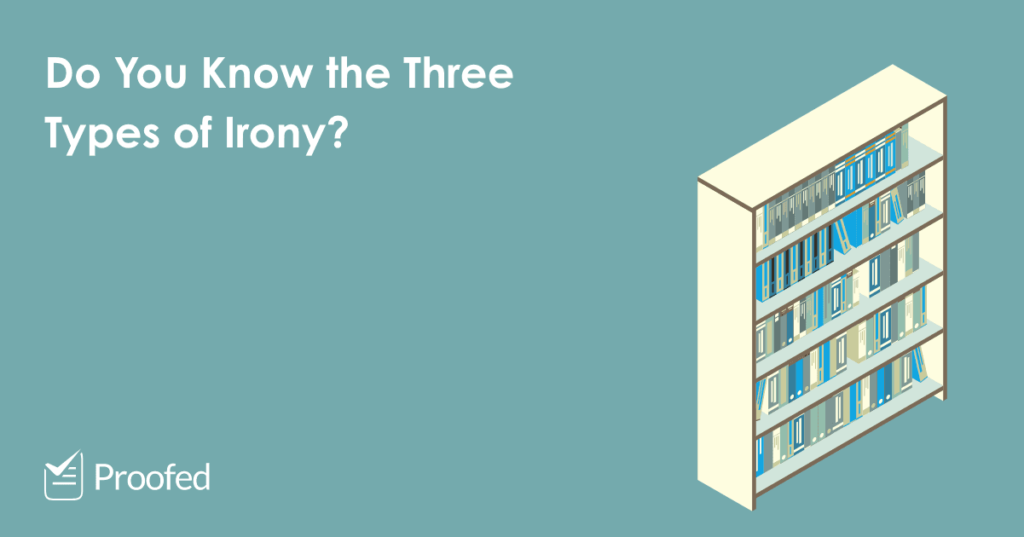Irony is often misunderstood. And the fact there are three types doesn’t help! But it is a useful tool in literary writing and may even crop up in daily life, so it is worth understanding the differences between the three key types of irony:
- Verbal irony (i.e., using words in a non-literal way)
- Situational irony (i.e., a difference between the expected and actual outcomes of a situation or action)
- Dramatic irony (i.e., an audience knowing something the characters don’t)

Check out our guide below for more on how these work. And if you’re concerned about misusing the term “irony” in your writing, you can also take a look at our post on using the word “ironic” correctly.
Verbal Irony
Verbal irony involves using words to mean the opposite of their literal definitions. Or, in simpler terms, verbal irony is saying one thing but meaning the opposite. For instance, imagine someone saying the following:
What a great day: I crashed my car and lost my winning lottery ticket!
Here, the speaker is using “great” ironically. They’ve actually had a terrible day! But they say the opposite of what they mean to draw attention to the difference between a “great” day and the one they really had.
One common form of verbal irony is sarcasm, where the speaker uses irony to mock or make fun of something. However, not all verbal irony is sarcastic: irony is only sarcasm when the aim is to ridicule.
Situational Irony
Situational irony occurs when the outcome of a circumstance or action does not match our expectations. Think about Aesop’s fable of “The Tortoise and the Hare.” Just like the hare, at the outset, we’d never expect the tortoise to win the race because hares are much faster. The unexpected nature of the tortoise’s eventual win emphasizes the moral of the story, that persistence and focus are important for success, or “slow and steady wins the race.”
Find this useful?
Subscribe to our newsletter and get writing tips from our editors straight to your inbox.

This type of irony allows writer to make a strong impression by subverting the reader’s expectations. It can be used simply to shock or entertain, but it can also encourage an audience to reflect on a key theme.
Dramatic Irony
Dramatic irony is a structural device that involves the audience knowing something the characters are unaware of. This is often a key piece of information about a situation and its likely outcome.
This type of irony increases tension, makes the audience feel powerful (I know something they don’t know!), and builds up anticipation. When will the truth finally be found out? How will the characters react?
A well-known literary example of dramatic irony is seen in Shakespeare’s Romeo and Juliet. (Spoilers ahead!) Romeo kills himself because he believes Juliet is dead, when the audience knows that she is about to wake up.
Using Irony in Your Own Writing
If you’re considering using irony in your writing, keep these key points in mind:
- Irony involves things not being what they seem, so you can use it to entertain and surprise, but also to emphasize certain themes in a text.
- It can be used to comic or tragic effect.
- Irony can include a lot of things, from a few words used ironically to make a point to an overarching structural device that runs through a story.
As such, it is worth thinking about the three types of irony and which one(s) you intend to use. And if you’re working on some writing at the moment, remember that our expert proofreaders are on hand 24/7 to help you make sure the final product is the best it can be.



